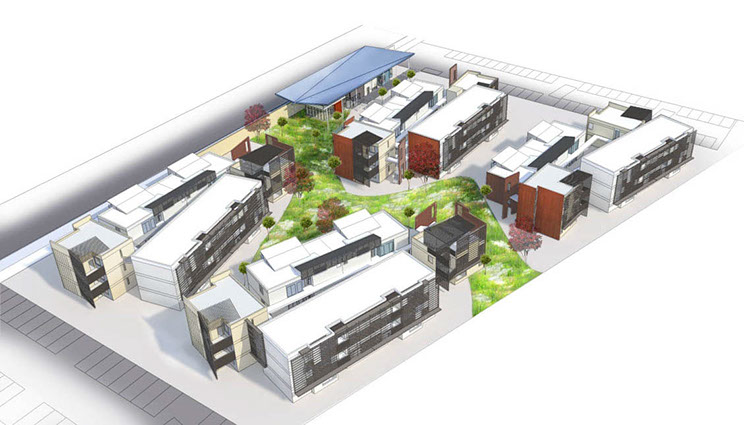
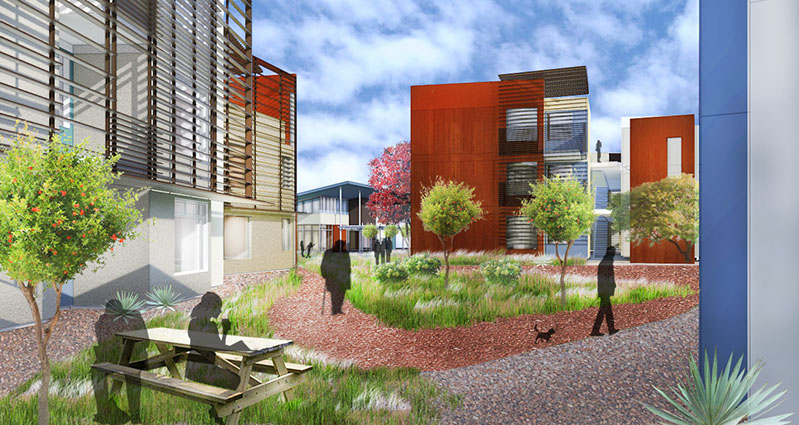
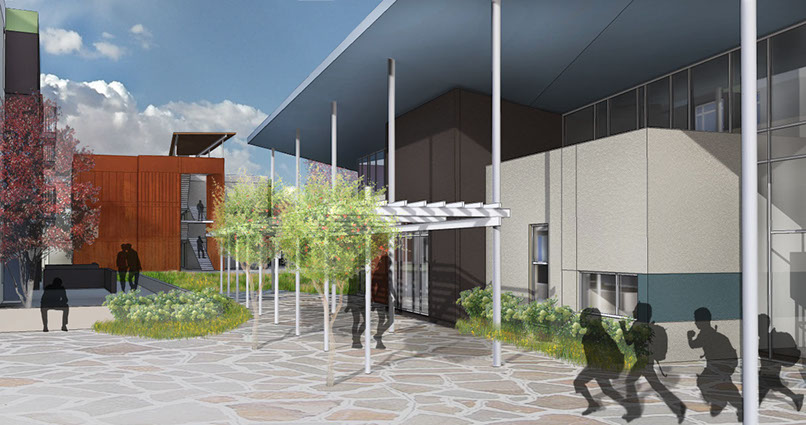
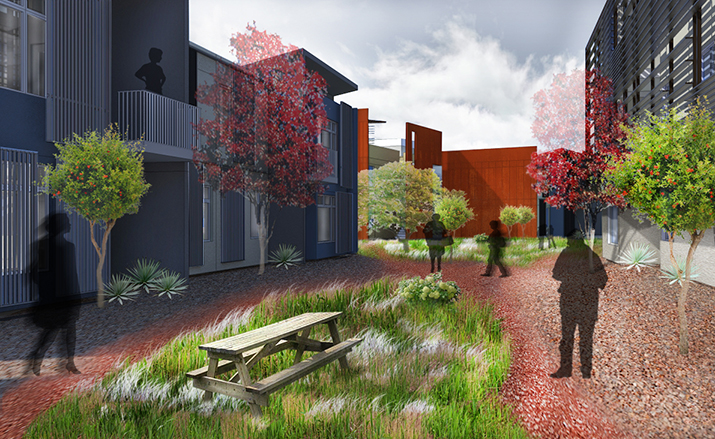
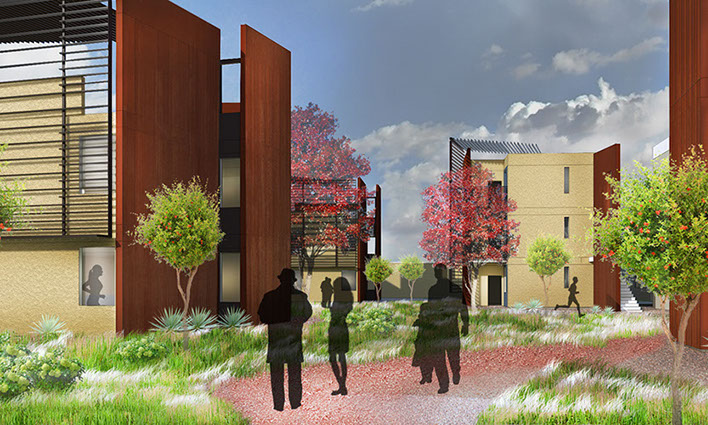
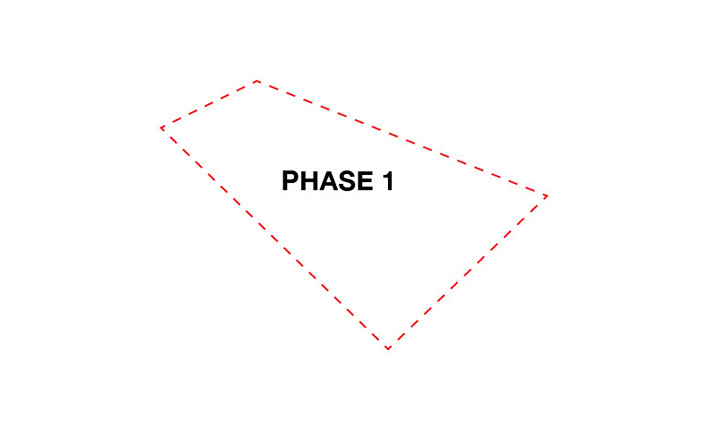
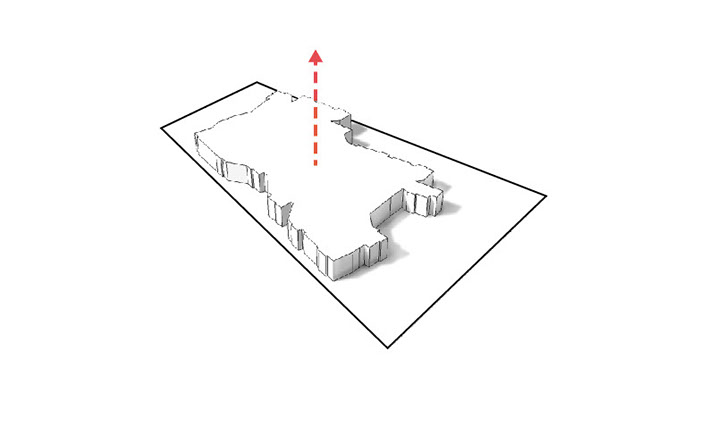
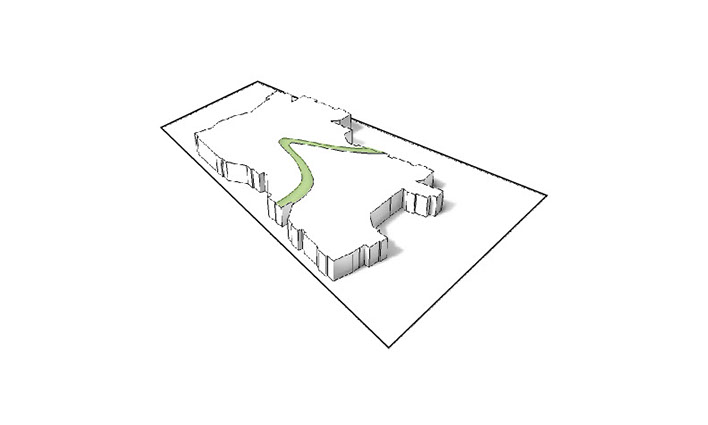
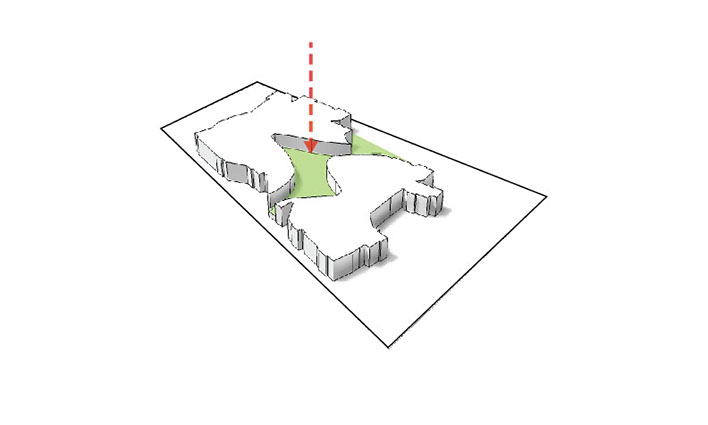
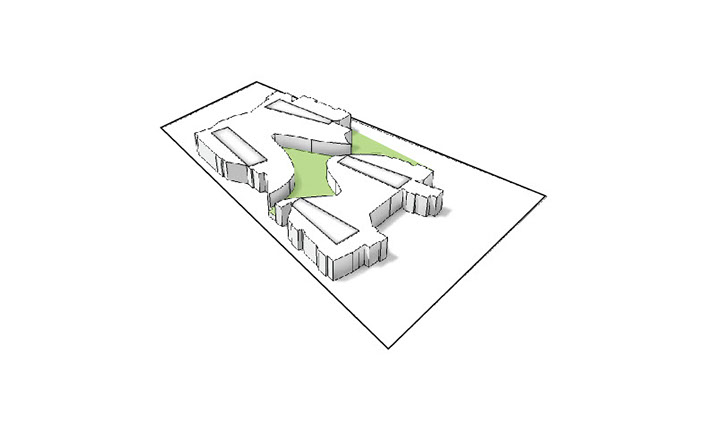
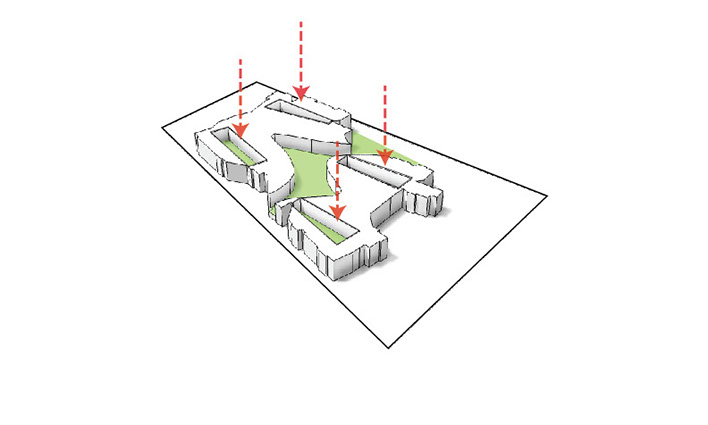
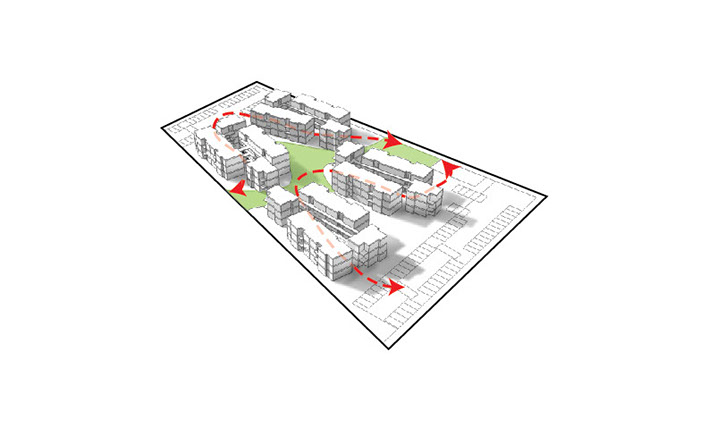














<
>
2012 — New Mexico Finance Authority; LIHTC Design Competition Winner
PEACHTREE CANYON
SIZE: 71700 sf
LOCATION: Las Cruces, New Mexico
STATUS: In Progress
The project site is in northeast Las Cruces, on the margins of the existing built environment but within a PUD development named Metro Verde that is slated for development over the coming years. The proposed project anticipates primarily serving a demographic of single parent households with children. The unit mix is divided between two and three bedroom units. It is expected that as many as one hundred to one hundred fifty children of differing ages may live on the site.
Due to the current lack of an urban context the design of the project draws upon the natural forms and systems of the surroundings. Throughout the desert southwest narrow canyons channel water through the landscape and support vibrant and verdant landscape at their floor. In the proposed project building masses are arranged to form a tight, deep “canyon” that cuts and bends through the site. The arroyo at the floor is slightly excavated and sculpted to both gather and channel sheet flow storm drainage and to detain developed flows. The water detained in this area supports the extensive planting and reduces the need for irrigation. This organic, natural area is the heart of the community providing a large nature-based playground for children.
Buildings on the site are organized around courtyards. Each cluster of four buildings surrounds a tall, narrow outdoor “room.” Each courtyard is unique, from its size, shape and orientation, to the palette of plants in its gardens. These urban spaces are in sharp contrast to the loose, fractured organization of the canyon and the unbounded open space of the desert surrounding the site. This contrast between urban and natural allows for a rich set of experiences when moving through the site.
Building architecture is place sensitive. South facing elevations are protected by a horizontal sunshade that allows ample daylight for passive heating during winter months but completely shades window openings between April and August. East and west walls use rain screen technology as a radiant barrier to minimize heat gain from intense morning and afternoon sun.
COPYRIGHT 2016 REVEAL.DESIGN
